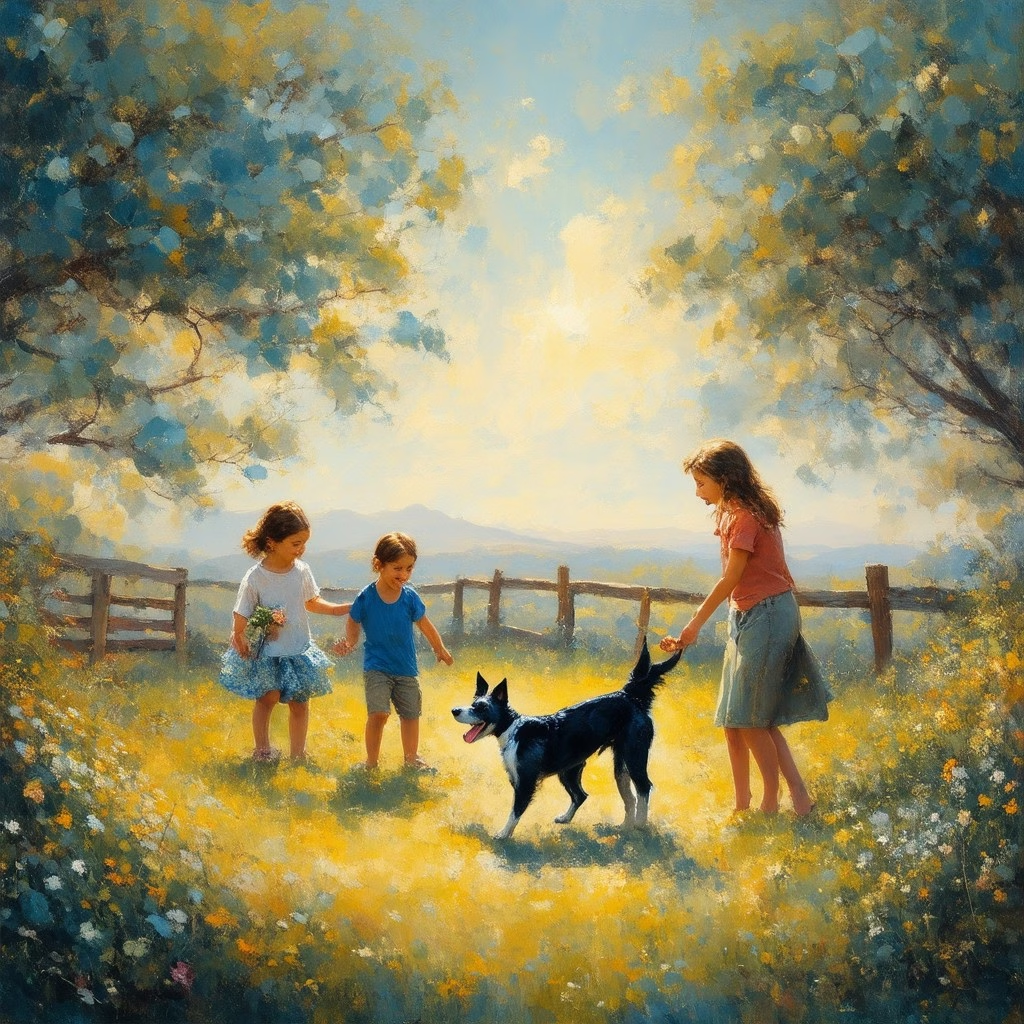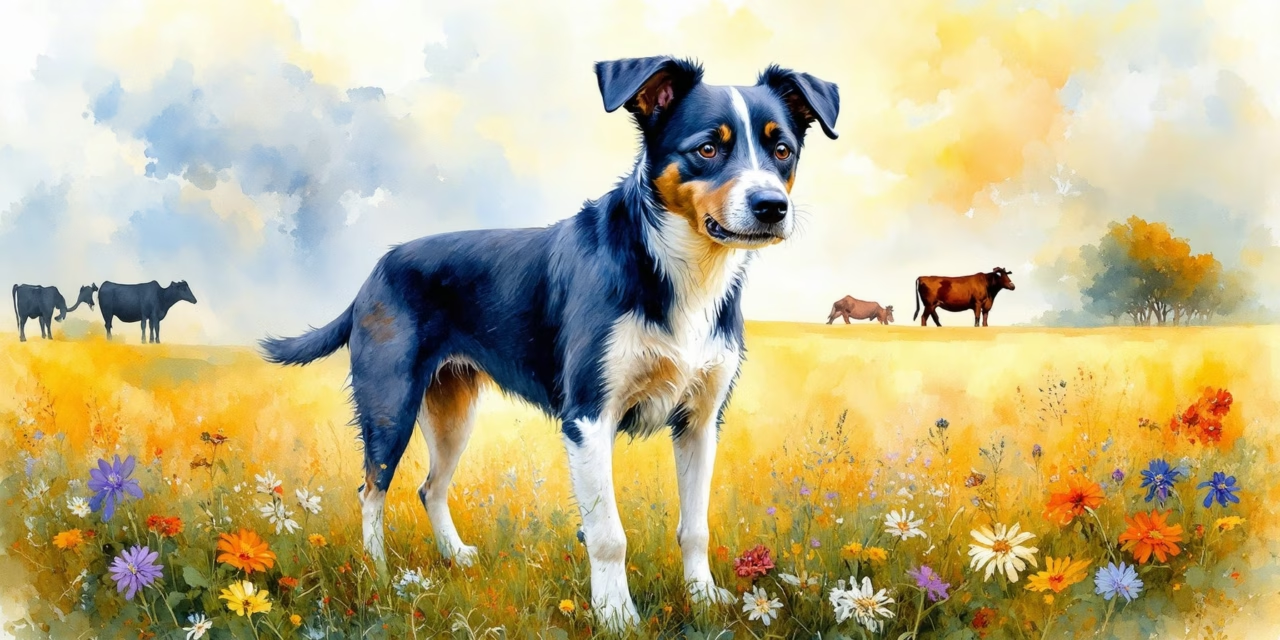Key Takeaways
- Australian Cattle Dogs, known as Blue Heelers, are intelligent, energetic, and protective, making them excellent companions for active families.
- Early socialization and training are crucial to prevent behavioral issues, such as aggression and nipping, commonly associated with their strong herding instincts.
- Blue Heelers thrive in environments with ample exercise and mental stimulation; daily activities like running and training help channel their energy positively.
- Understanding the unique temperament and heritage of Cattle Dogs ensures potential owners can provide the right care and training for a well-adjusted pet.
- Prices for Australian Cattle Dogs can range from $300 to $1,500, influenced by factors such as breed lineage, location, and whether the dog is adopted or purchased.
Welcome to our comprehensive guide on cattle dogs, where we delve into the fascinating world of these remarkable herding breeds. In this article, we will explore the unique temperament of the Australian Cattle Dog, often affectionately known as the Blue Heeler, and discuss their compatibility as family pets. You’ll learn about the connection between cattle dogs and Blue Heelers, uncover the origins of these loyal companions, and gain insights into their affectionate nature. We’ll also address common behavioral issues, provide training tips for home environments, and discuss the factors influencing cattle dog prices. Whether you’re considering adopting a cattle dog puppy or simply want to understand more about this breed, our article will equip you with valuable information to make informed decisions. Join us as we embark on this journey to discover the charm and heritage of Australian Cattle Dogs and their place in our families.
Is a cattle dog the same as a Blue Heeler?
Understanding the Cattle Dog and Blue Heeler Connection
Yes, a cattle dog is the same as a Blue Heeler, but there are nuances to understand. The term “Blue Heeler” specifically refers to the blue-colored variety of the Australian Cattle Dog breed. Here’s a more comprehensive breakdown:
- Breed Overview:
- The Australian Cattle Dog (ACD) is a herding breed developed in Australia for driving cattle over long distances. They are known for their intelligence, agility, and loyalty.
- Blue Heelers are simply one color variation of the ACD, characterized by their blue or mottled coat. Conversely, there are also Red Heelers, which have a red or tan coat.
- Physical Characteristics:
- Blue Heelers typically have a short, dense coat that can be blue, blue mottled, or blue speckled. They are medium-sized dogs with a strong, muscular build.
- Red Heelers share similar physical traits but exhibit a red or tan coat.
- Temperament and Behavior:
- Both Blue Heelers and Red Heelers are known for their high energy levels, intelligence, and strong work ethic. They require regular exercise and mental stimulation to thrive.
- They are often described as loyal and protective, making them excellent companions for active families or individuals.
- Health Considerations:
- Like all breeds, ACDs can be prone to certain health issues, including hip dysplasia and progressive retinal atrophy. Regular veterinary check-ups and a healthy diet are essential for their well-being.
- Training and Socialization:
- Early training and socialization are crucial for both Blue and Red Heelers. Their intelligence makes them quick learners, but they can also be stubborn if not properly trained.
For more detailed information on the Australian Cattle Dog, including care and health tips, refer to reputable sources such as the American Kennel Club and veterinary resources like PetMD. Understanding the distinctions and similarities between Blue Heelers and Australian Cattle Dogs can help potential owners make informed decisions about this energetic and loyal breed.
Differences Between Cattle Dog Breeds
When exploring the differences between cattle dog breeds, it’s essential to recognize the various types of herding dogs and their unique traits. The Australian Cattle Dog is one of the most recognized herding breeds, but there are several other breeds that share similar characteristics:
- Australian Cattle Dog vs. Australian Shepherd: While both are herding breeds, the Australian Shepherd is known for its versatility in various dog sports and has a more varied coat color. In contrast, the Australian Cattle Dog is more focused on cattle herding.
- Blue Heeler vs. Red Heeler: As mentioned, the primary difference lies in their coat color. However, temperament and behavior are generally consistent across both types, with both being energetic and intelligent.
- Other Herding Breeds: Breeds like the Border Collie and Belgian Malinois are also popular among herding dog breeds. They are known for their agility and intelligence, making them suitable for various tasks beyond herding.
Understanding these differences can help potential dog owners choose the right breed that fits their lifestyle and needs. For more insights on various cattle dog breeds, check out our Cattle Dog Blog Posts.

Are Cattle Dogs Good House Dogs?
Australian Cattle Dogs can indeed make excellent house dogs for the right families. Here are some key points to consider:
- Temperament: Australian Cattle Dogs are known for their loyalty, intelligence, and protective nature. They bond closely with their families and can be very affectionate. However, they may be reserved around strangers, making early socialization crucial.
- Energy Levels: These dogs are highly energetic and require regular exercise. They thrive in active households where they can participate in activities such as running, hiking, or playing fetch. Without sufficient physical and mental stimulation, they may develop behavioral issues.
- Training Needs: Australian Cattle Dogs are intelligent and eager to please, which makes them relatively easy to train. Consistent, positive reinforcement training methods work best. They excel in obedience and agility training, which can also help channel their energy productively.
- Space Requirements: While they can adapt to living in a house, they do best in environments where they have access to a yard or open space. Apartment living may not be suitable unless they receive ample daily exercise.
- Health Considerations: Like all breeds, Australian Cattle Dogs can be prone to certain health issues, including hip dysplasia and progressive retinal atrophy. Regular veterinary check-ups and a healthy diet are essential for their well-being.
- Family Compatibility: They can be great with children, especially if raised with them. However, supervision is recommended, as their herding instincts may lead them to nip at heels.
In summary, Australian Cattle Dogs can be wonderful house pets for active families who can provide the necessary training, exercise, and socialization. For more information on dog training and behavior, resources such as the American Kennel Club (AKC) and the Association of Professional Dog Trainers (APDT) offer valuable insights and guidance.
Cattle Dog Temperament and Family Compatibility
The temperament of Australian Cattle Dogs plays a significant role in their compatibility as family pets. These dogs are known for their strong work ethic and loyalty, making them devoted companions. Their protective nature can be beneficial for families, as they often form strong bonds with their owners. However, it’s essential to understand that their herding instincts may lead them to herd children or other pets, which can sometimes manifest as nipping. Early socialization and training are crucial to ensure they learn appropriate behaviors within the household.
Families considering adopting a cattle dog should evaluate their lifestyle and activity level. Cattle dogs thrive in environments where they can engage in physical activities and mental challenges. Providing structured playtime and training sessions can help channel their energy positively, making them well-adjusted family members.
Training Tips for Cattle Dogs in Home Environments
Training Australian Cattle Dogs requires consistency and patience. Here are some effective tips to ensure successful training in home environments:
- Start Early: Begin training as soon as you bring your cattle dog puppy home. Early socialization with various people, pets, and environments is vital for developing a well-rounded adult dog.
- Use Positive Reinforcement: Reward-based training methods work best for cattle dogs. Use treats, praise, and playtime to reinforce good behavior and obedience.
- Incorporate Mental Stimulation: Engage your cattle dog with puzzle toys and interactive games to keep their minds sharp. This can help prevent boredom and reduce the likelihood of destructive behaviors.
- Establish a Routine: Consistency is key. Set a regular schedule for feeding, walks, and training sessions to help your cattle dog understand expectations.
- Seek Professional Help if Needed: If you encounter challenges during training, consider enrolling in obedience classes or seeking guidance from a professional trainer familiar with herding breeds.
By following these training tips, you can foster a strong bond with your Australian Cattle Dog, ensuring they thrive as a beloved member of your family.
Are Cattle Dogs Cuddly?
Cattle dogs, particularly Australian Cattle Dogs (ACDs), exhibit a range of behaviors that can influence their cuddliness. Here are key factors to consider:
- Individual Variation: Just like any dog breed, ACDs can have distinct personalities. Some may be more inclined to cuddle, while others may prefer to maintain a bit of distance. Understanding your dog’s unique temperament is crucial.
- Attachment to Owners: ACDs are known for their strong bonds with their families. They often choose a “special person” within the household, which can lead to affectionate behaviors, including cuddling. This attachment is rooted in their herding instincts, as they thrive on close relationships with their human companions.
- “Velcro Dog” Trait: Often referred to as “velcro dogs,” ACDs tend to stay close to their owners and can experience separation anxiety if left alone for extended periods. While this trait doesn’t guarantee cuddling, it does indicate a desire for proximity, which can manifest in cuddly behavior.
- Alternative Affectionate Behaviors: Even if an ACD isn’t particularly cuddly, they express affection in various ways. This can include licking, nuzzling, or simply wanting to be near their humans. Recognizing these behaviors is important for understanding their affection style.
- Training and Socialization: Positive reinforcement training and consistent socialization play a significant role in shaping an ACD’s behavior. Engaging in training that encourages closeness and affection can help develop a more cuddly disposition. Techniques such as rewarding cuddly behavior can reinforce this trait.
- Exercise and Mental Stimulation: ACDs are high-energy dogs that require regular exercise and mental challenges. Providing adequate physical activity can lead to a more relaxed and affectionate demeanor at home, making them more likely to seek out cuddling as a form of bonding.
In summary, while ACDs may not be universally cuddly, their affectionate nature can be nurtured through understanding, training, and proper care. For more insights on enhancing your relationship with your ACD, consider resources from reputable dog training organizations or veterinary behaviorists.
Socializing Your Cattle Dog for Better Bonding
Socialization is crucial for Australian Cattle Dogs to develop into well-adjusted companions. Here are some effective strategies:
- Early Exposure: Introduce your ACD puppy to various environments, people, and other animals. This early exposure helps them become more adaptable and less anxious in new situations.
- Positive Experiences: Ensure that all interactions are positive. Use treats and praise to create a positive association with new experiences, which can foster a more affectionate demeanor.
- Group Classes: Enroll your ACD in obedience or agility classes. These classes not only provide training but also allow for social interaction with other dogs, enhancing their social skills.
- Regular Outings: Take your cattle dog on regular outings to dog parks or pet-friendly locations. This helps them learn to interact with other dogs and people, reinforcing their social skills.
By focusing on socialization, you can help your Australian Cattle Dog develop a strong bond with you and your family, leading to a more affectionate and well-rounded companion.
What two breeds make a cattle dog?
The Australian Cattle Dog, also known as the Blue Heeler or Queensland Heeler, is primarily a crossbreed developed in the late 19th century. The two main breeds that contributed to the creation of the Australian Cattle Dog are:
- Halls Heeler: This breed, also referred to as the Smithfield, was one of the foundational breeds used in the development of the Australian Cattle Dog. Known for their herding abilities, Halls Heelers were essential in managing livestock in the rugged Australian terrain.
- Kelpies: The Australian Kelpie, another key breed in this mix, is renowned for its intelligence, agility, and herding prowess. Kelpies were introduced to enhance the working capabilities of the Halls Heeler, resulting in a dog that is not only strong and resilient but also highly trainable.
Additionally, Dalmatians were also crossed into the lineage to improve the breed’s temperament and appearance. The combination of these breeds led to the development of a versatile working dog that excels in herding cattle and is well-suited for various roles in farming and ranching.
For further reading on the history and characteristics of the Australian Cattle Dog, refer to the American Kennel Club and the Australian National Kennel Council, which provide comprehensive insights into breed standards and training tips.
Exploring the Heritage of Blue Heelers
The heritage of Blue Heelers is deeply rooted in the Australian landscape, where they were bred to meet the demands of cattle herding. Their lineage reflects a blend of traits from various breeds, making them exceptional herding dogs. The Australian Cattle Dog’s ability to work in diverse environments is a testament to its robust genetic background.
As a result of their breeding, Australian Cattle Dogs are known for their intelligence, loyalty, and high energy levels. These traits make them not only excellent working dogs but also loving companions for active families. Understanding their heritage helps potential owners appreciate the unique qualities of these dogs, ensuring they provide the right environment and training for their needs.
If you’re considering adding a cattle dog to your family, it’s essential to recognize their herding instincts and the need for regular exercise and mental stimulation. For tips on activities that suit their energetic nature, check out our guide on Activities with Cattle Dogs.

What is the behavior problem with blue heelers?
Blue Heelers, also known as Australian Cattle Dogs, exhibit several behavior problems that can stem from their high energy levels, strong herding instincts, and need for socialization. Understanding these issues is crucial for effective management and training.
- Aggression: Blue Heelers can display aggression towards other dogs, strangers, or even their owners if not properly socialized from an early age. This behavior often arises from their protective nature and territorial instincts. According to the American Kennel Club, early socialization is vital to mitigate aggressive tendencies.
- Nipping and Biting: Their herding instincts can lead to nipping at heels or biting, particularly if they lack sufficient physical and mental stimulation. Research published in the Journal of Veterinary Behavior emphasizes the importance of providing adequate exercise to curb these behaviors.
- Destructive Behavior: Without proper engagement, Blue Heelers may resort to destructive behaviors, such as chewing furniture or digging. The ASPCA suggests that mental stimulation through interactive toys and training can help alleviate boredom.
- Excessive Barking: Their alertness and protective instincts can result in excessive barking, especially when left alone for long periods. The Humane Society recommends training techniques to reduce nuisance barking, such as teaching the “quiet” command.
- Territoriality: Blue Heelers can become overly territorial, particularly if they have not been socialized adequately. This can lead to defensive behaviors against perceived intruders. Consistent training and exposure to various environments can help mitigate this issue.
- High Energy Levels: This breed requires significant physical and mental exercise. Insufficient activity can lead to behavioral issues, including hyperactivity and destructiveness. The American Kennel Club advises daily exercise routines, such as long walks, runs, and agility training.
- Lack of Training and Socialization: Insufficient training can exacerbate behavioral problems. Positive reinforcement training methods are recommended to encourage desired behaviors. The Association of Professional Dog Trainers highlights the effectiveness of reward-based training in shaping a Blue Heeler’s behavior.
- Early Socialization: Exposing your Blue Heeler to diverse people, animals, and environments from a young age is crucial. This practice helps them develop into well-adjusted adults, reducing the likelihood of aggression and anxiety.
- Professional Help: If behavioral issues persist, seeking assistance from a certified professional dog trainer or behaviorist can be beneficial. They can provide tailored strategies to address specific problems effectively.
In summary, Blue Heelers require dedicated training, socialization, and exercise to prevent and manage behavior problems. By understanding their needs and implementing consistent training strategies, owners can foster a well-behaved and happy companion. For further insights, consult resources such as the American Kennel Club and the ASPCA, which provide valuable information on dog behavior and training techniques.
Solutions for Managing Cattle Dog Behavior Problems
To effectively manage the behavioral issues associated with Blue Heelers, consider the following strategies:
- Regular Exercise: Ensure your Australian Cattle Dog receives ample physical activity. Daily walks, runs, and playtime are essential to keep their energy levels in check.
- Structured Training: Implement a consistent training routine using positive reinforcement techniques. This approach helps reinforce good behavior while minimizing negative actions.
- Socialization Opportunities: Introduce your Blue Heeler to various environments, people, and other pets. This exposure is vital for developing a well-rounded temperament.
- Mental Stimulation: Engage your cattle dog with puzzle toys, obedience training, and interactive games to keep their mind active and prevent boredom-related behaviors.
- Professional Guidance: If challenges persist, consider consulting a professional trainer who specializes in herding breeds. They can provide tailored advice and strategies to address specific behavior problems.
By implementing these solutions, you can help your Blue Heeler thrive as a well-adjusted family member while minimizing behavioral issues. For more information on training and behavior management, explore our Cattle Dog Blog Posts.
What dogs should you avoid with kids?
When considering dog breeds that may not be suitable for families with children, it’s essential to evaluate temperament, energy levels, and potential behavioral issues. Here are five dog breeds that are often recommended to avoid in homes with young kids:
- Chihuahua: Known for their small size and big personalities, Chihuahuas can be prone to anxiety and may react defensively if they feel threatened. Their tendency to nip when scared can pose a risk to young children.
- Rottweiler: While Rottweilers can be loyal and protective, they require extensive training and socialization. Without proper guidance, their strong guarding instincts may lead to aggressive behavior, especially in chaotic environments.
- Chow Chow: This breed is known for its aloof nature and can be quite independent. Chow Chows may not tolerate rough play from children and can become aggressive if they feel their space is invaded.
- Pit Bull: Often misunderstood, Pit Bulls can be loving companions but require responsible ownership. Their strength and energy can be overwhelming for small children, and without proper training, they may exhibit aggressive tendencies.
- Dalmatian: Dalmatians are high-energy dogs that need significant exercise and mental stimulation. If not adequately engaged, they can become bored and destructive, which may lead to unpredictable behavior around children.
For families considering a dog, it’s crucial to assess not only the breed but also the individual dog’s temperament and training history. Engaging with a reputable trainer or behaviorist can provide insights into choosing a dog that fits well with your family dynamics. Additionally, resources like the American Kennel Club offer valuable information on dog breeds and their suitability for families. Always prioritize safety and compatibility when introducing a dog into a home with children.
Best Practices for Introducing Cattle Dogs to Children
Introducing a cattle dog to children requires careful planning and consideration. Here are some best practices to ensure a smooth transition:
- Supervised Interactions: Always supervise initial interactions between your australian cattle dog and children. This helps prevent any accidental injuries and allows you to monitor their behavior.
- Teach Gentle Handling: Educate children on how to approach and interact with the cattle dog. Encourage gentle petting and discourage rough play to foster a positive relationship.
- Positive Reinforcement: Use treats and praise to reward your cattle dog for calm behavior around children. This reinforces good interactions and builds trust.
- Establish Boundaries: Create safe spaces for both the cattle dog and children. Ensure the dog has a quiet area to retreat to when it needs a break from playtime.
- Socialization: Expose your cattle dog to various environments and people, including children, to improve its social skills and adaptability.
By following these best practices, you can help ensure that your australian cattle dog becomes a loving and protective member of your family, creating a harmonious environment for both pets and children.
Cattle Dog Price
When considering bringing a cattle dog into your home, understanding the factors that influence their price is essential. The cost of an australian cattle dog can vary significantly based on several key elements, including breed, lineage, and location. Generally, you can expect to pay anywhere from $300 to $1,500 for a purebred blue heeler or australian cattle dog.
Factors Influencing the Price of Cattle Dogs
- Breed and Lineage: Purebred cattle dogs from reputable breeders often command higher prices due to their lineage and health guarantees. For instance, blue heeler puppies with champion bloodlines may be priced at the higher end of the spectrum.
- Location: Prices can vary by region. In urban areas, where demand is higher, you may find cattle dogs for sale at a premium compared to rural areas.
- Age and Training: Puppies, especially puppy australian cattle dogs, typically cost more than adult dogs. Additionally, dogs that have undergone basic training may also be priced higher.
- Adoption vs. Purchase: Adopting from shelters or rescue organizations can be a more affordable option, often ranging from $50 to $300. Organizations like Petfinder provide resources for cattle dog adoption.
Comparing Australian Cattle Dog Prices Across Breeds
There are various cattle dog breeds, and their prices can differ. For example, the blue heeler is one of the most popular types of herding breeds, often priced similarly to the red heeler. However, mixed breeds, such as the blue heeler and lab mix, may be less expensive due to their mixed lineage. Understanding these differences can help you make an informed decision when looking for cattle dogs for sale.
For more detailed insights on cattle dog care and ownership, visit our Cattle Dog Blog Posts.













